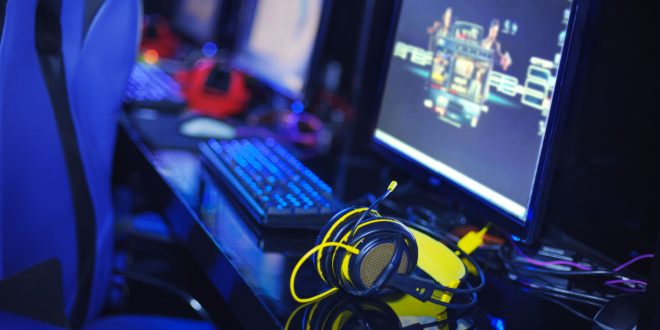In conversation with SBC News, Ben Steenhuisen, a Senior Software Architect at Bayes Esports, with 11 years of professional software development experience, elaborates on the impact game patches could have on wagering.
Navigating game patches and the impact they have on betting
In esports, we see teams from all over the world battle it out for victory. The electrifying atmosphere within the arena is as dynamic as the game titles themselves. In traditional sports, rules change the style and tactics over a longer period of time, whereas esports change at a more rapid pace by undergoing regular game patches.
Patching is the process of modifying a game usually to fix bugs, improve performance, or add new features. It’s one of the reasons game titles like Counter-Strike have remained so exciting over the past 20 years, but it also makes it challenging for sportsbooks and betting operators to navigate the ever-changing updates.
If they don’t stay up-to-date or let their models continue to run untouched, it leaves the door open for bettors to run away with a big portion of their money. It could also have drastic effects on the visual components integrated into a sportsbook. To deliver a competitive, engaging, and reliable product, operators must acquire or find a business partner to deliver the esports expertise and engineering resources to guide them through.
Deciphering the impact of esports patches
Patches in esports are very common and happen on a semi regular basis. Each game publisher handles them slightly differently, impacting the community and tournaments in different ways. League of Legends, for example, sticks to a patch schedule, whereas Dota 2 patches can pop up overnight. And while you may think patches only occur in off season to not disrupt major tournaments, this simply isn’t the case.
In simplified terms, patches can be broken down into three categories. Technical or back end changes, balance changes, and content related changes.
Technical patches: The impact of these types of changes will vary. They can be so small a player most likely won’t even notice or a more major overhaul, causing the engineers to repair many back end breakages. These updates don’t necessarily change the way a game is run but are vital for the performance and stability of the data integration.
Balance patches: These are often some of the most visible changes to players. The game publisher will notice something out of sync, and will tweak the strength or weakness of a weapon, hero, or ability to level out the playing field. This promotes diversity and keeps the game interesting.
Content-related patches: These patches introduce new elements into a game like Heroes in Dota 2 and maps in Counter-Strike 2. These changes are important to add to ensure a sportsbook’s visual experience stays up-to-date but they can also have significant implications on the way a game is played and the strategies of a team.
When a new item is added or big changes are implemented, no one, not even the best players in the world can predict how it will alter the game. Everyone is navigating it on an equal playing field, making it a complex puzzle to solve, which contributes to the difficulty of navigating esports betting.
Adapting to game patches in real-time
Adapting to a game patch requires meticulous attention to detail, swift action, and collaboration across multiple teams. Each change, whether it’s a tweak to weapon statistics or a map overhaul, must be thoroughly assessed and integrated into our customers’ betting model to ensure accuracy.
Depending on the type of patch, it can take up to a few hours to adapt our technology. The first thing we do is read the patch notes from the game publisher to understand what has changed and then test our pipelines to see if anything has been broken.
Depending on what’s changed, our engineering and data science team work together to implement various chores. For example, if a map has changed we update the map geometry, and if static assets like guns change, we update some static files.
This ensures that when you look at the Bayes Esports’ widget, the items and maps you see are accurate. We wouldn’t want players moving off the 2D map because we had an old version of the map in place. Everything, of course, starts on the data side, meaning if we identify a new data point required for modelling, then we will investigate how to get it in a way that is reliable and accurate for our customers.
After that we look at if there has been information added that alters our understanding of the game. This is where having esports experts on hand is integral. Something as seemingly minor as a map change, could have a big effect on the probabilities. If the map that is strongest for a specific team is removed, this will negatively impact their performance and in-turn impact the odds an operator provides.
The customer will receive the updates in our documentation portal which is automatically generated as the changes go into production. We are streamlining our processes even further which makes navigating these changes easier for both ourselves and our customers. Of course the big, more rare patches we must still navigate more manually, however as our customer base has grown, we are able to automate the simpler patches.
Like with any technical updates, bugs may occur which is why we are in constant communication with our customers to provide anything they need for a smooth transition. Our operations team is also heavily involved in the feedback loop. Since they are managing the tournament fixtures 24/7, they will notify us if anything appears off, so we can get things back on track in no time.
Strategies for maintaining accuracy during patches
How do customers ensure accuracy when a patch occurs? The truth is, not all do, which ultimately affects their turnover. For sportsbooks and betting operators, staying ahead of the curve during patches is essential to maintaining accurate odds. So, how can a data provider, like Bayes Esports support this?
It varies for each of our customers depending on the products they receive from Bayes Esports. Our customers that receive live match data will receive the updated and accurate data points through our one integration. It is then down to them on how they navigate this patch with their odds models. Maybe they let it play out, or maybe they run potential simulations with past data to understand the potential outcomes better.
Other Bayes Esports’ customers receive our live match predictions to manually trade their own odds. This will require our customers’ esports traders to have a good understanding of the patch to minimize the risk with their odds.
And lastly, customers that receive Bayes live odds will have to trust that the traders are on top of the patch. That is why it is so beneficial to have the choice of multiple odds providers from our marketplace. In one feed, mix and match odds for tournaments and markets and have ultimate trust in the product you deliver.
Part of being a good sportsbook is being aware of these changes and knowing when things are stable, safe, and reliable – and knowing when they may not be. Since many markets are heavily dependent on one another, sportsbooks wouldn’t remove a specific fast market altogether, but instead impose restrictions on in-play betting like limiting the amount of money that can be bet until a patch becomes more stable. Sportsbooks can provide a good player experience but for a short period of time lose money as they are learning with each patch.
The crucial role of data providers in patch management
Unlike traditional sports, where rule changes undergo long scrutiny and trials, esports changes operate at a faster, and more frequent pace. A publisher can make a sweeping change with just a few mouse clicks, and overnight the best teams worldwide will be affected.
Sportsbooks, which often juggle multiple game titles as well as traditional sports, may struggle to allocate the resources needed to understand and respond to these rapid changes effectively. As a result, partnering with a specialized esports data provider like Bayes Esports becomes essential. When partnering with us, you acquire a team of engineers, data scientists, and esports experts, enabling you to outpace your bettors and attain profitability.









